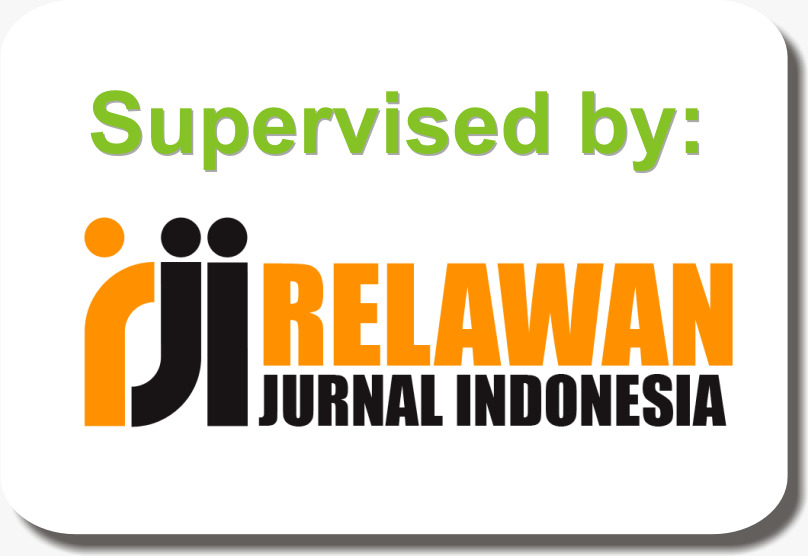Visual Structure Construction Of Mahabharata Series Illustrated Stories By Herjaka In Postmodern Perspective
DOI:
https://doi.org/10.31598/bahasarupa.v8i3.1947Keywords:
Cultural Identity, Mahabharata, Picture stories, Postmodern, Visual structureAbstract
Picture stories are known as popular culture because of their mass production. In the view of modern art, picture stories are categorized as low-class work. However, with the presence of the literary heritage of the Mahabharata story in puppets, Herjaka's Mahabharata series becomes a paradox because the low-class and high-class cultures merge into one. This study aims to describe the construction of the visual structure of the Mahabharata series as a postmodern culture. This research method uses a qualitative design with data analysis using visual communication design theory, postmodern theory, representation theory, and hermeneutic theory. The results show that the construction of the visual structure of the Mahabharata series by Herjaka consists of modern and traditional visual appearances. This literary work is a postmodern cultural work because the fusion of boundaries between traditional and modern cultures and the loss of boundaries between literary heritage and popular culture marks it. The picture stories in the Mahabharata series show the birth of the re-creation of the picture stories and the presence of culture as a struggle for meaning in postmodern culture.
References
[1] B. Sulanjari, “IDEOLOGI VERSUS IDENTITAS DALAM PAGELARAN WAYANG KULIT”.
[2] S. G. Ajidarma, “Politics of Identity in the Indonesian Wayang Comics,” vol. 32, 2017.
[3] F. Hanisha and Y. A. Djalari, “Bahasa Visual , Gambar Anak, dan Ilustrasi Pada Buku Cergam Anak,” J. Seni Dan Reka Ranc. J. Ilm. Magister Desain, vol. 1, no. 1, pp. 63–82, Nov. 2018, doi: 10.25105/jsrr.v1i1.3878.
[4] Iwan Gunawan, “Gerakan ‘Tjergam Medan’ dalam Wacana ‘ Kepribadian Nasional,’” J. Seni Nas. Cikini, vol. 7, no. 2, pp. 105–128, Dec. 2021, doi: 10.52969/jsnc.v7i2.138.
[5] A. Buchari, “Postmodernisme dan Ideologi Budaya Nasional,” J. Ilm. Iqra, vol. 7, no. 1, Feb. 2018, doi: 10.30984/jii.v7i1.602.
[6] L. J. Moleong, Metodologi Penelitian Kualitatif Edisi Revisi. Rosdakarya, 2007.
[7] I. W. Nuriarta, I. N. D. Putra, I. N. Suarka, and I. A. L. Sari, “REPRESENTATION OF BALINESE CULTURE IN GUN GUN’S MAHABHARATA EPIC PUPPET COMIC,” vol. 17, no. 2, 2024.
[8] S. Tinarbuko, Perancangan dan Pengkajian Desain Komunikasi Visual. Yogyakarta: ISI Yogyakarta, 2021.
[9] I. W. Nuriarta, “Tanda Dan Makna Kartun Politik Koran Jawa Pos Tahun 2019,” Mudra J. Seni Budaya, vol. 34, no. 3, pp. 366–371, Sep. 2019, doi: 10.31091/mudra.v34i3.795.
[10] I. W. Nuriarta, “POSTER SEBAGAI MEDIA REPRESENTATIF DALAM PENCITRAAN IDENTITAS BUDAYA BALI PADA MASA KOLONIAL (BELANDA),” vol. 11, no. 01, 2016.
[11] L. Hutcheon, “A Poetics of Postmodernism: History, Theory Fiction”.
[12] Y. Fahmilda and Y. A. Prastiyono, “REPRESENTASI, PARODISASI, DAN KONTEKSTUALISASI TUJUH PULUHAN KARYA YANUSA NUGROHO: PENDEKATAN POSMODERNISME LINDA HUTCHEON”.
[13] Y. A. Piliang, Semiotika dan Hipersemiotika. Bandung: Matahari, 2012.
[14] A. W. B. S. W. B.S., “HERMENEUTIKA SEBAGAI SISTEM INTERPRETASI PAUL RICOEUR DALAM MEMAHAMI TEKS-TEKS SENI,” Imaji, vol. 4, no. 2, Nov. 2015, doi: 10.21831/imaji.v4i2.6712.
[15] F. B. Hardiman, Seni Memahami Hermeneutik dari Schleiermacher sampai Derrida. 2015.
[16] A. I. Saidi, “HERMENEUTIKA, SEBUAH CARA UNTUK MEMAHAMI TEKS”.
[17] D. V. D. Meij, “Traces of the Ramayana and Mahabharata in Javanese,” Wacana, vol. 20, no. 3, p. 583, Sep. 2019, doi: 10.17510/wacana.v20i3.791.
[18] H. HS, Kesetiaan Dewabrata. Yogyakarta: Kanisisus, 2005.
[19] S. Salam, Seni Ilustrasi. Makasar: Penerbit UMN, 2017.
[20] D. Sihombing, Tipografi dalam Desain Grafis. Jakarta: Gramedia Pustaka Utama, 2015.
[21] M. Danesi, Pesan, Tanda, dan Makna. Yogyakarta: Jalasutra, 2010.
[22] A. D. Gunadi and A. Azwar, “Semiotic exploration of Indian patriarchy: Roland Barthes’ perspective on Gangubai Kathiawadi,” Dewa Ruci J. Pengkaj. Dan Pencipta. Seni, vol. 19, no. 1, pp. 91–101, Jun. 2024, doi: 10.33153/dewaruci.v19i1.5836.
[23] A. A. N. A. Kumbara, M. Rinny Liando, I. B. G. Putra, and N. Sutrisno, “Udayana School of Kajian Budaya compared to the Spell of British Cultural Studies: Critical Discourses in Debate,” J. Kaji. Bali J. Bali Stud., vol. 14, no. 2, p. 587, Oct. 2024, doi: 10.24843/JKB.2024.v14.i02.p13.
[24] S. R. Hamdiyati, “ANALISIS HEGEMONI GRAMSCI DALAM CERPEN ‘ADAM MA’RIFAT’ KARYA DANARTO,” -Nahdah Al-Arab., vol. 1, no. 2, pp. 18–22, Aug. 2021, doi: 10.22373/nahdah.v1i2.1228.
[25] chris barker, Kajian budaya: teori dan praktik. in 1. Yogyakarta : Pustaka Pelajar, 2021, 2021.
[26] I. Bambang Sugiharto, Postmodernisme: tantangan bagi filsafat, Cet. 1. in Pustaka filsafat. Yogyakarta: Kanisius, 1996.
[27] Limas, M. A. ., & Valentina, A. (2025). Desain Visual Kartu Tarot Untuk Pengenalan Cerita Rakyat Batu Menangis. Jurnal Bahasa Rupa, 8(1). https://doi.org/10.31598/bahasarupa.v8i1.1611
[28] U. Pawitro, “Fenomena Post-Modernisme dalam Arsitektur Abad ke-2”.
[29] S. G. Ajidarma, Panji tengkorak: kebudayaan dalam perbincangan, Cet. 1. Jakarta: Kepustakaan Populer Gramedia : École française d’Extrême-Orient, 2011.
[30] I. W. Nuriarta, I. N. Suarka, and I. A. L. Sari, “Articulation of Indonesian Identity in Mahabharata Epic Puppet Comics by Sundanese, Javanese, and Balinese Comic Artists,” vol. 14, no. 01, 2024.
[31] M. P. Wahidiyat, M. D. Marianto, and M. A. Burhan, “Semiotic Analysis of the Changes of Ondel-ondel Costume Elements as a Betawi Cultural Negotiation,” J. Hum., vol. 34, no. 1, p. 23, Mar. 2022, doi: 10.22146/jh.64495.
[32] Angkawijaya, Y. ., Kusumawati, Y. A. ., Gozali, A. ., & Yana, E. . (2025). A Visual Narrative: Leveraging Digital Comics To Preserve And Promote Traditional Arts. Jurnal Bahasa Rupa, 8(1). https://doi.org/10.31598/bahasarupa.v8i1.1748
Downloads
Published
How to Cite
Issue
Section
License
Copyright (c) 2025 I Wayan Nuriarta, Ida Ayu Dwita Krisna Ari

This work is licensed under a Creative Commons Attribution-NonCommercial-ShareAlike 4.0 International License.
The author's copyright in the Bahasa Rupa Journal, assigns that the publication of published articles is owned by the editorial board with the author's approval, but the rights are still with the author. The legal rules for accessing digital electronic articles are under license  Attribution-NonCommercial-ShareAlike 4.0 International (CC BY-NC-SA 4.0), which means that the Bahasa Rupa Journal has the right to store, modify, manage databases, maintain and publish articles without the author's permission, but the author as the copyright holder is still written as it is. Articles published in Bahasa Rupa Journals, both in hard and soft copy forms are available as open access, for educational, research and library purposes, and beyond that purpose, the editorial board of the Language and Language Journal is not responsible for illegal copyright infringement. This journal also applies LOCKSS and CLOKSS archiving.
Attribution-NonCommercial-ShareAlike 4.0 International (CC BY-NC-SA 4.0), which means that the Bahasa Rupa Journal has the right to store, modify, manage databases, maintain and publish articles without the author's permission, but the author as the copyright holder is still written as it is. Articles published in Bahasa Rupa Journals, both in hard and soft copy forms are available as open access, for educational, research and library purposes, and beyond that purpose, the editorial board of the Language and Language Journal is not responsible for illegal copyright infringement. This journal also applies LOCKSS and CLOKSS archiving.












.png)





